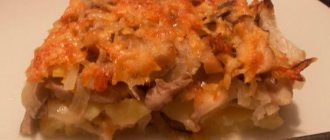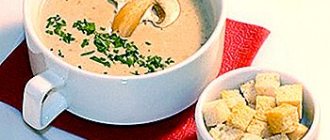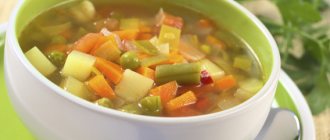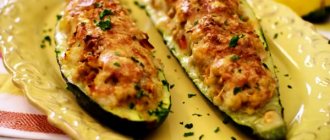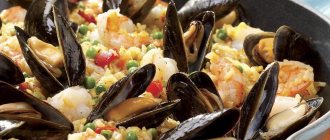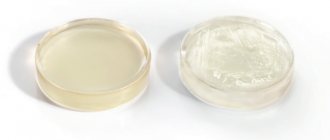Grainy halibut caviar is traditionally considered a delicacy. However, it costs less than salmon and sturgeon caviar, so our chances of “meeting” it are higher. In the Far East, the product is included in the daily menu, and in Japan it is almost the cheapest and most accessible caviar. The health benefits of this product when consumed correctly can be significant. Since ancient times, caviar has been recommended for those recovering from illness, experiencing high physical and mental stress, and seeking to improve the quality of their diet.
Useful properties of halibut caviar
Halibut roe is rich in omega-three fatty acids. They are a product that is extremely beneficial for the heart and blood vessels. Omega-3 helps keep blood vessels “clean,” helps lower blood pressure, and helps control the level of “bad” cholesterol in the blood. Their effectiveness has been proven in the prevention of coronary heart disease, angina, and tachycardia of various natures.
Omega-3s are truly the “secret ingredient” of any weight loss diet or diet for a physically active person. Their regular use helps reduce inflammatory processes in tissues and rapid muscle regeneration after microtraumas typical of power loads. Halibut caviar will help restore muscles faster and experience less soreness, which is why it is often included in bodybuilders’ diets.
Halibut caviar is also a source of collagen, a substance extremely beneficial for our skin and connective tissue. It is collagen deficiency that leads to such popular problems as “sagging” skin after rapid weight loss. You can increase elasticity by regularly introducing halibut caviar into your diet. Moreover, if you are counting calories, you can choose a product steamed with spices, rather than the traditional salted and fried versions.
In addition, halibut caviar is useful for those losing weight. It contains protein and healthy fats, which helps maintain a healthy hormonal system. The normal “dosage” of the product is 20-30 g per day, this is quite enough to achieve the above goals, provided that the rest of the diet is balanced and rich in protein.
In addition, it is useful to give caviar to anyone who experiences regular visual overload. The richness of vitamins A and E helps maintain the health of the retina and serves as the prevention of diseases associated with its dystrophy. The combination of halibut caviar with regular carrots, pumpkin or pumpkin juice is especially useful.
Due to the high content of tocopherol and folic acid, halibut caviar is beneficial for the female reproductive system. It is often used by those preparing for pregnancy to increase their chances of conceiving. Caviar is also useful in the diet of pregnant and nursing mothers, but in this case the fact that the woman’s body adapts to seafood and fish is of great importance. If she is not allergic to fish collagen, eating caviar may be safe. The only point is that pregnant women, of course, are not recommended to eat raw halibut roe; steaming and stewing in water are preferable.
Caviar contains a certain amount of vitamin D, so it can serve as a product used to prevent growth problems in children. Caviar can also be used as a natural “tan enhancer”; in this case, it is best to combine it in dishes with peaches, carrots, sweet red peppers or pumpkin.
Harmful effects of halibut roe
An excellent healthy food product can also cause harm to the body. First of all, there is an allergic reaction to fish, or more precisely, to a specific protein contained in caviar. It usually manifests itself in the form of a “cold” - the throat swells, and increased secretion of mucus from the nose begins. If symptoms appear just after eating caviar, it makes sense to take an allergy test.
Many problems arise with stale caviar. When purchasing a product, it is best to opt for either the frozen version in the supermarket or fresh caviar “from ice”, but not the product that is stored in a plastic barrel without refrigeration in the market. No assurances from sellers that caviar does not spoil have anything to do with reality. Bacteria actively multiply in the protein-rich mass, the result can be unpleasant poisoning, and even serious digestive upset, and the need for hospitalization.
Salted caviar is not the healthiest choice. Of course, when salting without the addition of hot brine, the vitamins are preserved, but the very high sodium chlorine content creates a potential health risk. Let us remind you that salted caviar is strictly contraindicated for pregnant and lactating women, as well as for anyone who has problems with blood pressure, both in the direction of hypertension and hypotension. Excessive consumption of salted caviar can cause swelling and disrupt the electrolyte balance, especially if the lover of salted caviar also manages to play sports. Well, drinking plenty of liquid after salty foods contributes to “overload” of the heart.
Salted halibut caviar is traditionally not recommended for various kidney diseases, precisely because of the disruption of fluid excretion processes. In addition, it is not useful for disorders of the liver, gall bladder, stomach and intestines. In general, this product should be strictly dosed even for a healthy person, not exceeding 1-2 tablespoons per day.
Especially for – fitness trainer Elena Selivanova.
Welcome!
I not only love, but adore everything related to fish. I literally cannot go a day without seafood. And I prefer fish to meat. This has been since childhood. Apart from me, no one else in the family is such a fan of fish dishes. Therefore, there is no competition. My husband doesn’t even eat red caviar, not even salmon, salmon, etc.
I'm constantly trying something new. Either these reptiles, or something else tasty)
This time I saw caviar in a glass jar on sale at Magnit. I haven’t tried this one yet or even seen it. After making sure that this was not a protein version made from algae, but a real fish product, I decided to buy it.
Price: 219 rubles
Weight: 100 grams
Hypermarket "Magnit"
Nutritional characteristics:
Fats, g/100g 3
Proteins, g/100g 26
Calorie content, kcal/100g 131
kJ/100g 548
Compound:
Halibut caviar, salt, vegetable oil, preservative E200 (sorbic acid), preservative Varex-7, natural dye E 153.
The caviar, as I already said, is in a glass jar with a screw-on lid.
We open it and see a lot of black eggs, I would say a black mass of eggs.
The first thought was “Are there any dyes here?”, and I immediately went to Google. Yes, there is a dye, natural, fortunately, it is charcoal
. Thanks to him, the halibut caviar in the jar is exactly black. In nature, it is colorless, as it turns out, but it becomes black in production.
In general, “who is” this halibut?
Halibut fish
is a marine predatory fish belonging to the Kambalov family. Its size reaches two meters, and its weight is one hundred kilograms. The peculiarity of this fish is the location of the eyes: they are both located on the right side of the head. The skin color of the sea dweller can vary from dark green to brown-black depending on its habitat (see photo).
Today there are four types of halibut
:
- Whitebark
(common) - the largest type of halibut, the weight of which can reach three hundred and fifty kilograms, and the length - five meters, these giants are residents of the Bering and Okhotsk seas;- blue-skinned (black)
- a medium-sized fish, weighing fifty kilograms and up to one and a half meters long, found in the same places where the white-skinned species is found;- American arrowtooth
- the size of such a fish usually does not exceed eighty-five centimeters, and its weight is three kilograms, most often lives in the northern part of the USA;- Asian
arrowtooth is the smallest variety of halibut, which grows up to seventy-three centimeters in length and weighs up to two kilograms, found in the Sea of Japan and Bering Sea.Halibut meat is white in color and has a non-bony and greasy texture. In terms of taste, the white-skinned type of this fish is the leader. It is considered the most tender and delicious.
I have never tried halibut meat before, so I don’t know what kind of fish this fish tastes like. Although it’s interesting, since I love fish very much, I’ll repeat.
What is halibut caviar? In reality, it is beige in color, quite small - slightly smaller in size than red eggs. And even in appearance and to the eye it is very different from black (beluga), that is, even painting it black does not bring it closer to a rare and expensive delicacy.
Natural caviar of fish of the flounder family (halibut), which can be found on the open market, is divided into: roe, prepared from immature roe with weak grain without separating the film; frozen, stored as raw material for further processing; pasteurized, dry salted and packaged in containers; salted-dried, offered by manufacturers as a separate product by weight, prepared from roe; punched, prepared from salted mature grain, freed from films.
But is this comparison necessary?
After all, halibut caviar has a number of its own advantages that are unique to it.
So, unscrew the tin cap and see the product directly. The eggs are dense, identical, even. There is no excess liquid that appears after cooking (salting) defrosted raw materials. That is, this caviar is not frozen. Which is already good.
However, you can’t call it completely crumbly either. There is no water, but not dry. You can see it in the photo.
You can also see that it is clearly colored - activated carbon tablets immediately come to mind. But, fortunately, this does not affect the taste in any way.
But bread colors when the liquid from the eggs is absorbed into it.
The eggs are small - smaller than salmon caviar. A lot of them. They are quite elastic
There is also no similarity in taste to red and (especially) black caviar. That is, it is an independent product - dyed halibut caviar.
Tasty or not?
In general, yes. If you don’t draw parallels, but just make a sandwich and enjoy it together with a cup of coffee, green tea or (as in my case) Asti (on occasion, of course), then it’s not bad.
Caviar is like caviar, moderately salty, not bitter, without any extraneous unpleasant tastes. Perhaps the loaf tastes even better with butter, but I’m not good with butter.
The caviar is not sticky - rather slippery.
This will be an interesting new product for lovers of seafood and fish (if you haven’t tried it yet).
Moreover, the price is not high - why not try it. I bought it several times, satisfied my interest, I don’t buy it anymore, since I still like red caviar more (well, I like it... or rather, I adore it), but my husband doesn’t eat such things at all, so there’s no competition.
I liked that it was caviar, that is, not a protein version. Of the minuses, I can only note one nuance - I wanted a slightly more pronounced taste. And a little more salt (this is due to my indifference to salty things. But even to me it’s bland). I won’t call it “any”, but it’s clearly not for everyone and, apparently, this product needs to be tried well to be loved.
True, drawing conclusions about its taste “for an amateur,” I cannot help but draw conclusions about its benefits (with a “question” sign), since the composition contains preservatives.
Fortunately, Magnit always has it - you have the opportunity to buy it at least once and draw your own conclusions.
Keep in mind - if it’s like black caviar, then no! If as an independent product, then “so-so”. There are no "chips" in it. But you can eat it, it’s delicious.
Mushrooms are called boletus mushrooms because of their slippery to the touch and seemingly oily, sticky cap. This is one of the most common tubular mushrooms of the Boletaceae family. The oiler is gray, the oiler is yellowish, granular, larch, white, yellow - in nature there are about fifty species of them. The main growing area is the Northern Hemisphere, but some species are also found in other regions of the world. Butterflies grow in large families in young coniferous or mixed forests and delight mushroom pickers from the first days of summer until mid-autumn.
Benefit
Butter is a universal raw material for cooking: it can be fried, stewed, pickled, salted, and makes wonderful soups. They go well with other foods, so they are the basis of many salads and snacks.
Many people believe that boletus is second only to boletus mushrooms in terms of taste. These mushrooms are rarely dried.
Butter is 94% water; the drying process is lengthy and requires special conditions.
In addition to high taste and nutritional properties, boletus has a number of advantages.
- These mushrooms contain almost all the substances and vitamins necessary for humans. The protein they contain is equivalent to animal protein, so boletus can replace meat in the diet. This is especially true for vegetarians and people who fast.
- Butter contains lecithin, which prevents the formation of cholesterol.
- A rare resinous compound found in boletus helps remove uric acid from the body, which alleviates the symptoms of migraines and chronic gout.
- Boletus contains aphrodisiacs that increase vitality, helping a person fight chronic fatigue and depression.
- The skin of butternut squash contains antibiotics and some substances that help stimulate the human immune system. Vodka tinctures of boletus are used in the treatment of certain bone diseases.
Preparing mushrooms for pickling
Successful hunting for forest gifts is only half the battle, although special vigilance is required here, since the diversity of mushroom species can confuse even the most experienced mushroom picker. You should look especially carefully at each mushroom so that there is no poisonous one in the basket.
After harvesting, the mushrooms need to be prepared for canning at home.
Sorting
The collected forest products must be sorted by type, because each variety has its own characteristics (taste, smell, time and behavior during cooking). It is also recommended to divide the species by size. An aesthetic criterion comes into play here: mushrooms of approximately the same size look much more attractive on a holiday table.
Important! If you want to make assorted mushrooms, you should remember that, despite the information indicated in the recipes for preparing pickled mushrooms for the winter, some types should not be cooked together. So, boletus will darken if placed in the same container with boletus. Cooking white boletus, boletus and boletus in one vessel ends with the boletus being overcooked, while the white boletus and boletus are undercooked.
Soaking and soaking
These processes are relevant for such species as honey mushrooms, valui, svinushki, and are unique cleaning methods. For example, it is recommended to soak honey mushrooms for an hour in salted water, and then rinse them under a high-pressure stream of water. This method will save you a lot of time that would be required for manual cleaning.
As for valuev and svinushki, before marinating, they must be soaked for two days in salted cold water. The water needs to be changed every 10-12 hours.
It is not recommended to soak the remaining varieties (white boletuses, boletuses, milkweeds, boletuses, etc.), as they will absorb excess moisture. They just need to be washed in running water.
Read also: How to dry mushrooms in the microwave?
Almost every mushroom unit needs individual inspection and cleaning. So, for champignons and butter mushrooms, you need to remove the skin from the caps, and the latter are first advised to be immersed in boiling water for 1 minute to facilitate this process. In white boletus, boletus, russula, etc., the legs are separated from the caps, and the chanterelles are thoroughly cleaned of dirt and debris under running water.
Important! To cleanse the mushrooms, it is advisable to place them in a solution of water, salt and citric acid in a ratio of 1 liter of water/1 teaspoon. salt/2g acid to prevent them from browning.
Harm
If you conduct a comparative analysis of the beneficial and harmful properties of butter, then the advantage in favor of the former will be undoubted. And yet, butterfish have harmful qualities that must be taken into account when collecting, preparing and consuming them.
- Butterflies, more than other mushrooms, are capable of absorbing radioactive elements from the soil. To neutralize these harmful chemical elements, mushrooms should be thoroughly boiled before adding to the main dish.
- In order not to harm your health and the health of your loved ones, you should not collect these mushrooms near highways and industrial enterprises: they can accumulate carcinogens that contribute to the development of cancerous tumors.
- The fiber contained in boletus contains chitin, which interferes with the absorption of mushrooms and negatively affects the digestion of other foods.
- Butter proteins break down slowly, so they are considered “heavy” food. It is not advisable to eat mushrooms in large quantities.
What mushrooms are suitable for pickling?
Any representatives of this diverse kingdom are suitable for pickling mushrooms for the winter in jars, except for the poisonous ones, of course.
Did you know? Mushrooms are considered the most diverse of earth's inhabitants. There are about two million varieties, of which only 100,000 have been learned, and even less have been classified.
When looking for a species for conservation, your choice should be on porcini mushrooms, greenfinches, chanterelles, boletus mushrooms, moss mushrooms, row mushrooms, saffron mushrooms, aspen mushrooms, boletus mushrooms, goat mushrooms, russula mushrooms, fat mushrooms, champignons, etc.
Contraindications
Butternuts, like other mushrooms, should be consumed with caution by people with ailments of the gastrointestinal tract, liver, gall bladder, or pancreas.
It is strictly forbidden to feed mushrooms to children under three years of age. Such “heavy” food can cause enormous harm to an organism that has not yet fully developed and cause severe intestinal disorders.
Pregnant women are not contraindicated in consuming butter. It is only necessary to comply with the recommended norm. Under no circumstances should you overeat.
Vitamins and minerals
Butter contains the most important vitamins and minerals for the healthy functioning of the human body. Eating mushrooms, of course, will not satisfy your full nutrient needs, but will be a good addition to a properly formulated diet.
Table of vitamins in boletus
| Name of vitamins | Contents per 100 grams of product | % of recommended daily intake |
| Vitamin B1 (thiamine) | 0.03 mg | 2 % |
| Vitamin B2 (riboflavin) | 0.3 mg | 16,7 % |
| Vitamin B6 (pyridoxine) | 0.3 mg | 15,0 % |
| Vitamin B9 (folic acid) | 30.0 mcg | 7,5 % |
| Vitamin C (ascorbic acid) | 12 mg | 13,3 % |
| Vitamin PP (niacin) | 1.494 mg | 0,7 % |
Minerals
There is no data on the composition of macroelements in boletus. Among the microelements, iron occupies the most important place in these mushrooms.
If you correctly approach the collection and preparation of butter, you can enrich your diet with a tasty and nutritious product. You just need to remember that there are false boletus. Therefore, when in doubt, it is best to follow the advice of experienced mushroom pickers: “If you are not sure, it is better to throw the mushroom out of the basket!”
How much does pickled butter cost (average price per 1 kg)?
Moscow and Moscow region.
We think that if you ask residents of our latitudes which edible mushrooms enjoy the greatest polarity, many will name boletus among others. The mushroom, scientifically called Common oiler or Suillus luteus, belongs to the genus of the same name. Boletus mushrooms grow in mixed pine, birch, and oak forests.
Mushrooms choose sandy soil for growth, as well as bright places, such as clearings, forest edges or areas along country roads. Researchers note that, as a rule, boletus grows under coniferous trees. Sometimes found in thickets of cereal crops or in shaded areas. Butterflies are usually adjacent to mushrooms such as russula, chanterelles, porcini mushrooms or greenfinches.
The distribution area of mushrooms such as boletus is limited to the Northern Hemisphere of planet earth. This is due, first of all, to the fact that boletus plants choose cold weather to grow. but at the same time a temperate climate. In tropical climates, boletus mushrooms have not been found in their natural habitat. Boletus mushrooms are widespread throughout most of the Russian Federation.
In addition, boletus grows in the North Caucasus, the Far East and the Siberian region. Mushroom pickers and professional cooks rank boletus as one of the most popular edible mushrooms. Using boletus, you can prepare quite a large number of dishes, both first and main, and also appetizers.
Butternuts have an excellent taste when boiled, fried, salted or pickled. Mushroom sauces are made from boletus, and mushrooms are also used as a filling in the process of making homemade baked goods. pickled boletus is considered a particularly popular delicacy for residents of our latitudes. In addition, pickled butter is a product that can retain its distinctive taste and, in addition, consumer characteristics over a long period of time.
In the cold winter, pickled boletus can become not only tasty, but also a healthy reminder of sunny summer days. On the shelves of modern domestic stores you can find ready-to-eat pickled butter. However, few will argue with the statement that the store-bought version of pickled butter can not be compared with homemade preparations. The calorie content of pickled butter is at a very low level.
On average, the caloric content of pickled butter is 18 kcal, which is contained in 100 grams of the product. In order to prepare pickled butter, you will need the following ingredients: fresh butter, bay leaf, sugar, 9% vinegar, as well as lemon juice, black peppercorns and non-iodized salt. Initially, the boletus is washed and peeled, then cut in half and boiled in water with the addition of lemon juice and salt.
After some time, the mushrooms are washed, and then again poured with cold water and cooked for 20 minutes. The jars are pre-sterilized and a bay leaf and black peppercorns are placed on the bottom. Boiled boletus is placed on top, and then the mushrooms are poured with marinade, which includes water, sugar, vinegar and salt. Roll up jars of pickled butter with tin lids, and then turn them over (lid down) and wait for the finished canned culinary product to cool completely.
Chocolate raisin cupcakes
12.07.2020
How to make birds from dough recipe
12.07.2020
Canned pink salmon salad: recipes Pink salmon salad without rice
12.07.2020
Basic tips for pickling mushrooms
Every housewife loves to surprise her family and guests with her signature home-cooked dish. In this regard, many refuse to buy products in supermarkets that can be prepared with their own hands, especially if the hostess knows the main secrets of witchcraft in the kitchen.
Let’s reveal the main secrets and recipes for preparing masterpiece pickled mushrooms for the winter, because such a dish is an unsurpassed delicacy.
Did you know? For a long time there were discussions about which kingdom this product should belong to: plants or animals. And as a result, in 1960, a separate kingdom was identified - the kingdom of mushrooms. Its representatives consist of protein (which brings them closer to animals), carbohydrates and minerals (these components are inherent in plants).
- For this process, you should choose only enameled or tinned containers, since such containers are not corroded by vinegar.
- As for the vinegar itself for the marinade, it is better to choose bread or fruit vinegar. The best option is Rhine (nest) and aromatic vinegar.
- Small mushrooms are pickled whole, cutting off only the lower part of the stem. This will also add an unsurpassed look to the dish.
- If during a “quiet hunt” you came across only large forest gifts, it is recommended to cut them into 3-4 parts.
- It is recommended to preserve the caps of porcini and aspen mushrooms separately from the roots.
- Boletus must be preserved without the skin.
- Preparing valueu for the cooking process involves soaking it for several hours.
Read also: Obabki, Boletus, Aspen boletus, Grabovikov

